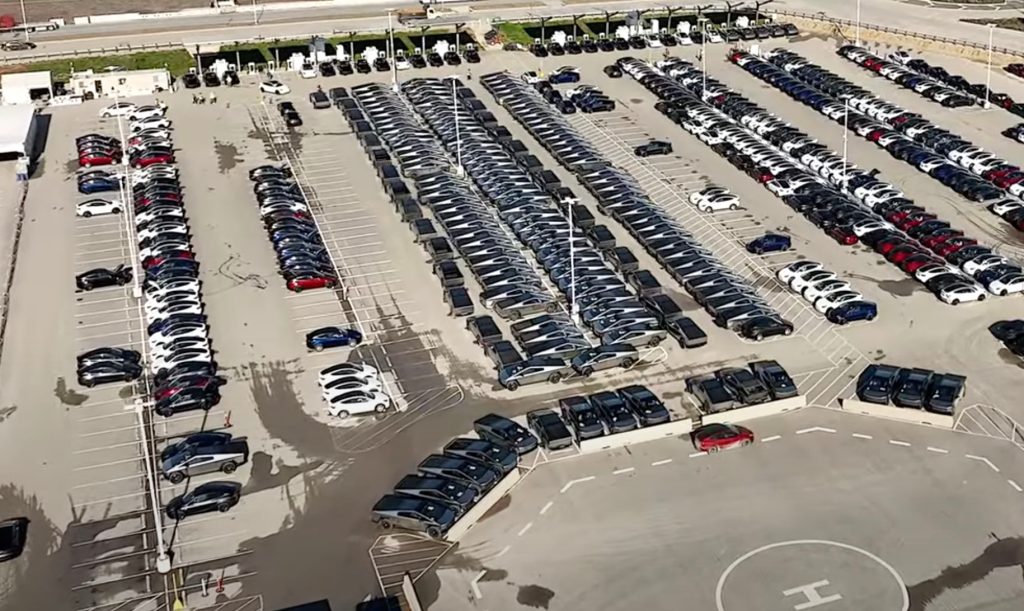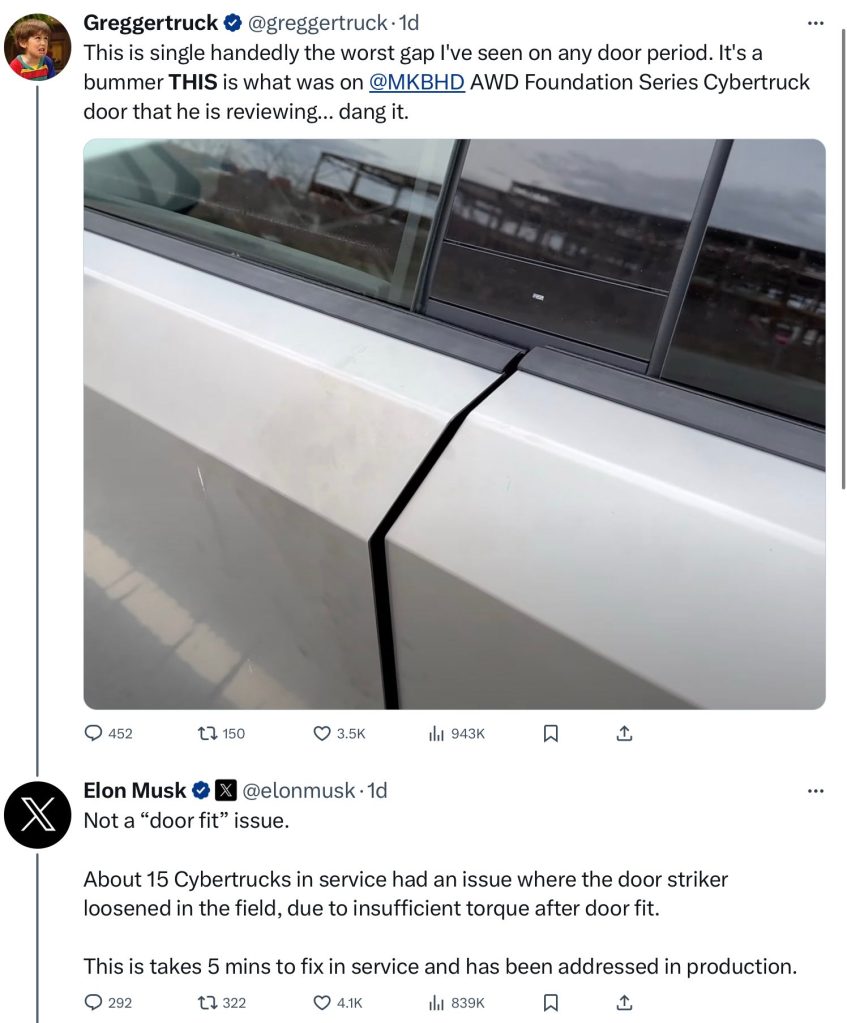Tesla appears to be making significant progress in its Cybertruck production ramp, but it is coming at a cost.
The automaker is about to finish its first full quarter of Cybertruck production, and it looks like it has made some great progress.
It has been hard to track Cybertruck production, and drone flyovers have been the primary way to track it.
A new drone flyover of Tesla Gigafactory Texas by Brad Sloan showed hundreds of Cybertrucks at multiple locations around the factory, including some being loaded on trucks for deliveries.

It looks like Tesla is getting closer to producing 1,000 Cybertrucks per week, which would be an impressive ramp for the first quarter of production.
But volume is one thing. Quality is another.
Tesla is having issues with its early Cybertruck units, which is not something completely unusual for a new vehicle program
Electrek has talked to two recent Cybertruck buyers who had complete vehicle failures in their first week of ownership. They both had the rear motor fail.
They were told by Tesla service that it is a fairly common problem that is creating a backlog in parts. The customers were told that it would be a few weeks before Tesla could perform the repairs.
Even the Cybertruck that MKBHD reviewed had a significant door gap defect, which CEO Elon Musk confirmed was a known issue:

Some Cybertruck owners have questioned the statement that it is an “easy fix” or at least that it will result in a quick experience at service centers as several Cybertruck owners report that their vehicles are in service for longer than in their garages.
Electrek’s Take
Now, I’m no hater. It is fairly normal for any vehicle program, from any automaker, to have issues early in the production process, but I think it’s also fair to say that Tesla, due to its nature, has more issues.
For better or worse, Tesla moves a lot faster than any other automaker. That’s a fact.
It enables it to bring vehicle programs to production faster and bring changes to its vehicles faster. For example, it doesn’t wait for new model years to bring improvements to its manufacturing systems.
However, it also means that things can fall between the cracks and things like we are seeing now with the Cybertruck happen.
There are pros and cons to everything.
FTC: We use income earning auto affiliate links. More.



